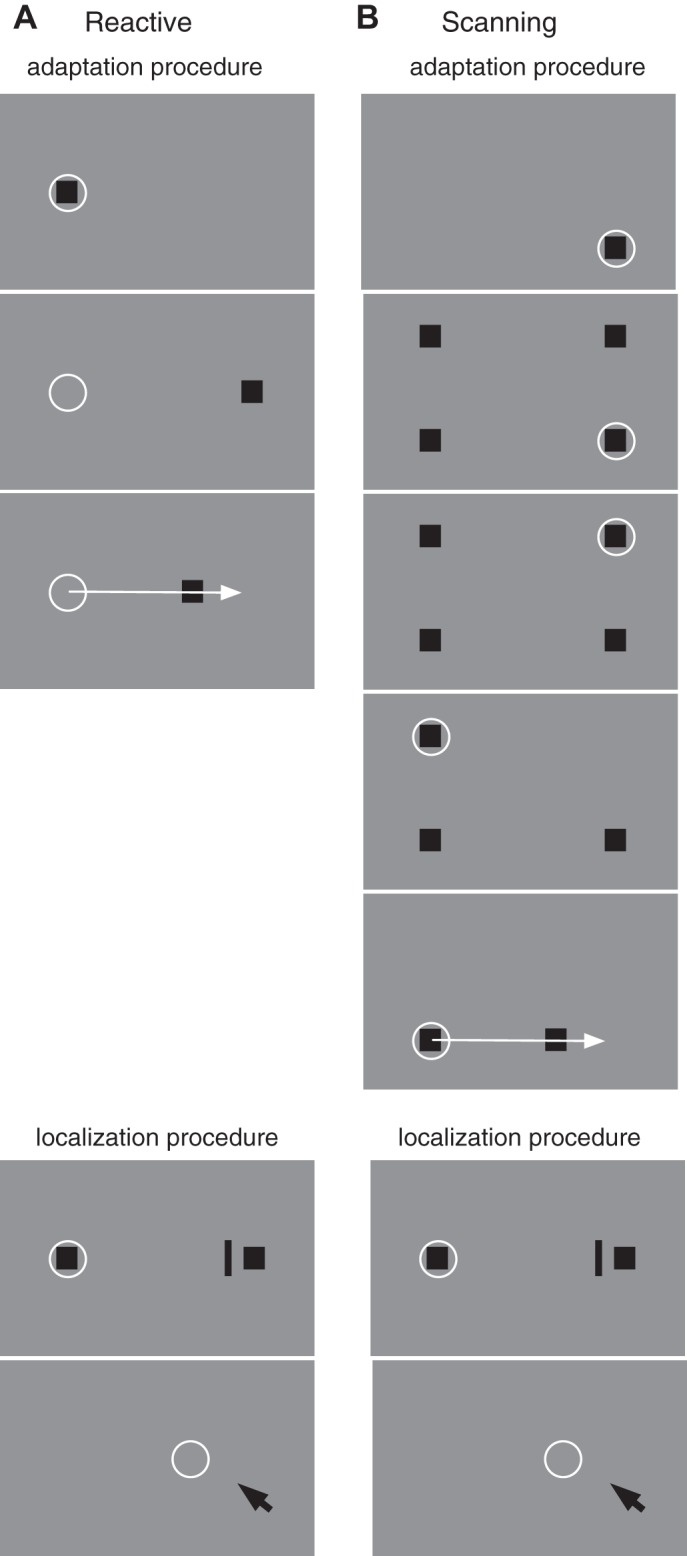Fig. 2.

A: experimental procedure for reactive saccade adaptation. At the beginning of the trial (top) a fixation point (square) is presented near the left screen border. The subject's gaze (circle) is directed to the fixation point. After 1,000 ms (middle) the fixation point disappears and a saccade target appears 30° to the right of the fixation point. The subject initiates the saccade to the target. When the saccade onset is detected (bottom) the saccade target is displaced, inducing a visual error after the saccade. In localization trials a probe bar was shown at least 150 ms before saccade execution for 20 ms. After saccade execution, a mouse pointer was shown with which the subject had to localize the position of the probe bar. B: experimental procedure for scanning saccade adaptation. At trial onset (top), 4 squares are presented. The subject fixates the bottom right square (circle). At voluntary pace, the subject scans the squares in a counterclockwise manner. As the subject executes a saccade, the previously inspected squares are extinguished. Adaptation takes place during the saccade from the bottom left to the bottom right square (bottom). When the onset of the saccade is detected, the bottom right square is displaced to the left, inducing a visual error after the saccade. Localization was measured with the same procedure as in reactive saccades.
